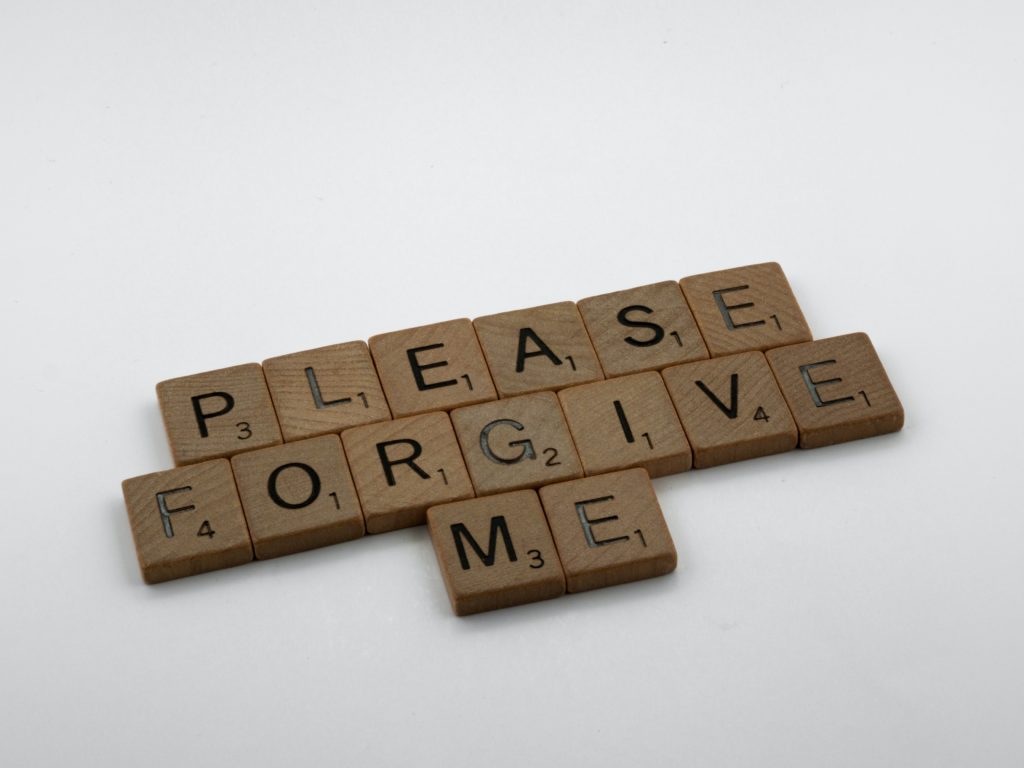Note: I discovered this forgiveness protocol from an online comment from Kaitlin Curtice. I think it’s a really good process for working through apologies and making amends when we’ve harmed others. The author has made it public domain and asked people to share it widely, so I’m posting it here in the hopes it helps you as well.
The Forgiveness Protocol
by Judith Eve Lipton M.D. for Psychology Today
- Say you are sorry.
- Make an inventory of how your behavior might have hurt or harmed someone. Ask that person if the list is complete, and correct your list to reflect a complete account of the costs of your behavior.
- Say you are sorry again. Be prepared to say this many times.
- Tell the other person exactly how you understand the costs of your behavior, and allow the other person to vent, elaborate, or reiterate as needed so that the other person really feels heard.
- Clarify with the other person if the behavior was a simple accident, a mistake, a mistaken calculation of costs and benefits, or a deliberate deed. This part is not easy and takes time and attention. “Thoughtlessness” is one of the most common sources of problems, and may reflect recurrent self-centeredness. Intentional acts of revenge or malice also require great insight to acknowledge.
- Humbly ask forgiveness. Describe your inner state of guilt, remorse, sadness, grief, anger or whatever.
- Describe what you have learned from the incident. Show insight and awareness, or yourself and your mistake, and the other person and his/her pain.
- List what you will do or change to avoid a repetition of the incident.
- Clarify what penalties to expect if you make a mistake, or transgress again. Discuss what each of you will do to avoid repetition.
- Say you are sorry, yet again.
Too many people believe that simply saying sorry one time should suffice, if we have hurt somebody’s feelings. However, the legal code is more clear: If you hurt somebody’s car, you have to pay the damages. It can be difficult to itemize emotional costs, but to heal, it must be done.
In effect, the Forgiveness Protocol offloads the pain and suffering of a victim back onto the perpetrator, by making the perpetrator humble, thoughtful, and indebted, in other words, subordinated, with a need to pay back the injury with considerable amends.
Take it, try it. Put it up on your refrigerator. Teach it to your children. Since we all make dreadful mistakes sometimes, it is important to know how to make a cogent apology. It is one of the pathways to peace, personally and globally.

Judith Eve Lipton, M.D., is a psychiatrist and Distinguished Fellow of the American Psychiatric Association. Lipton has been married for 39 years to Professor David Barash; they have coauthored 8 books, on sex, war, and human nature, including Payback: Why We Retaliate, Redirect Aggression, and Take Revenge and Gender Gap: How Genes and Gender Influence Our Relationships.

forgiveness heals our relationships. Thanks for taking time to encourage parents to teach this and model it for their families.